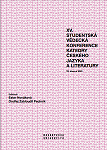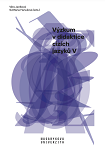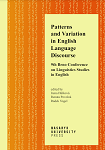
Dérivés suffixaux en -er, -iser et -isation: quel rythme, quelle vitalité ?
In this paper we will show with examples that the French language has many lexical resources that allow it to adapt flexibly to the appearance of scientific, technical, conceptual, etc. novelties. Not only is French not “frozen”, as some voices are claiming, but it possesses the means to create new words, especially nouns and verbs, that complete the rich existing paradigms. The verbal suffixes -iser, rarely -er, as well as the noun suffix -isation, are very productive nowadays. The corpus that we will analyze in this paper consists mainly of titles of articles found in the present-day online press from France and French-speaking Switzerland. Beside the linguistic presentation of the new words, we will also mention if several French dictionaries available online have already integrated these words given their frequency on the Internet. The comparison between the use of the new words in the online press and their reception in different online dictionaries shows that in many cases the evolution of the language is faster than lexicographic policies.
More...




